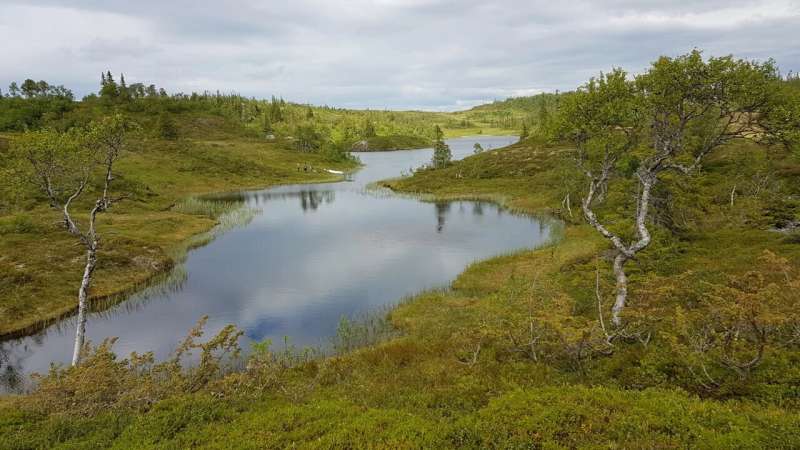Global changes affect algal production in northern lakes

Globally rising temperatures and the browning of lakes, i.e. changing color due to increased dissolved organic material, can both inhibit and promote algal growth in northern lakes. This is shown by Isolde Callisto Puts in her thesis that she defends on Friday 3 June at Umeå University in Sweden.
"The results in my thesis highlight the power of browning and warming to change aquatic ecosystems. Given the large-scale warming of the entire northern hemisphere, these findings are probably relevant on a global scale," says Isolde Callisto Puts, doctoral student at the Department of Ecology and Environmental Sciences at Umeå University.
Global warming, recovery of acidification and changes in land use have caused warming and browning of northern lakes. Increased temperature and browning impact aquatic primary producers (algae) which are a major component of the aquatic food web, and thus changes in primary production affect aquatic ecology in general.
Puts's research shows that increased temperatures and nutrient additions through browning increase primary production in clear lakes with low levels of dissolved organic material, while browning of humic lakes with high levels of dissolved organic material inhibits primary production through reduced light transmission.
Furthermore, Puts has investigated how these changes affect benthic algae (which grow on lake bottoms and sediments) and pelagic algae (which grow free-floating in the water column) in terms of habitats and the sum and distribution of biomass produced by benthic and pelagic algae— which is called autotrophic structuring.
Puts has interpreted measurements from several lakes in Swedish Arctic, subarctic and boreal landscapes which represent a wide range of browning intensities. She also conducted an experimental study in 16 ponds where she assessed the extent to which temperature and browning affect algae that grow on plastic strips where browning and temperature have been manipulated.
In addition to assessing the direct effects of changes in nutrients and light conditions in connection with browning, Puts also investigated the indirect effects of global changes on primary production, for example through intensified warming, carbon dioxide supersaturation, changes in lake acidity (i.e. their pH value), and the role of landscape processes and properties.
The results confirm that browning is the dominant factor in structuring primary production in northern lakes through light inhibition, nutrient supplementation, indirect warming of surface water and through carbon dioxide fertilization. Warming can increase algal growth, but thermal compensation of algae can also lead to decreased algal growth.
"In addition, the primary production of benthic algae generally exceeds the pelagic primary production and should therefore not be excluded in studies that assess global change effects on primary production, which is often the case today," says Puts.
Browning and warming of lakes affect the total primary production, as well as the autotrophic structuring in northern lakes, and probably also the productivity and composition of higher trophic levels.
More information: Impacts of global change on primary production in northern lakes. urn.kb.se/resolve?urn=urn:nbn:se:umu:diva-194523
Provided by Umea University




















